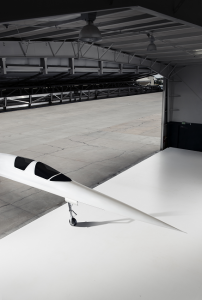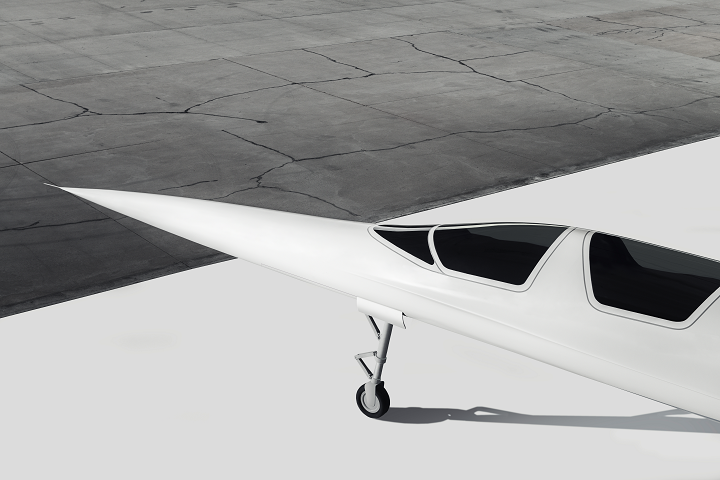Boom Supersonic Working with VELO3D to Make Metal 3D Printed Hardware for Supersonic Flight Demonstrator
Metal 3D printing startup VELO3D came out of stealth mode last year with its innovative, support-free laser powder bed fusion process that offers a lot more design freedom than most metal systems. Since the company commercialized in 2018, it’s made known that aerospace manufacturing is one of its largest target markets, and since that time at least two OEMs in that industry are using its Sapphire 3D printing systems to make parts. Now, it has just announced a partnership with Colorado-based Boom Supersonic – the company working to build the fastest supersonic airliner in history.
“Boom is reimagining the entire commercial aircraft experience, from the design, build, and materials used. Our technology is designed to help innovators like Boom rethink what’s possible, empower advanced designs with little or no post-processing, and enable an entirely new approach to production,” said VELO3D’s CEO Benny Buller. “Boom needed more than just prototypes and we’re thrilled to help them create the first 3D-printed metal parts for an aircraft that will move faster than the speed of sound.”
 Boom, founded in 2014 and backed by several investors, employs over 130 people to help realize its vision: use supersonic travel to make the world significantly more accessible to the people who live in it. The company wants to bring businesses, families, and cultures closer together, and has recognized that 3D printing will help speed up the process. Recently, Boom renewed its existing partnership with Stratasys in order to create 3D printed parts for its XB-1 supersonic demonstrator aircraft, which is exactly what VELO3D will be doing as well.
Boom, founded in 2014 and backed by several investors, employs over 130 people to help realize its vision: use supersonic travel to make the world significantly more accessible to the people who live in it. The company wants to bring businesses, families, and cultures closer together, and has recognized that 3D printing will help speed up the process. Recently, Boom renewed its existing partnership with Stratasys in order to create 3D printed parts for its XB-1 supersonic demonstrator aircraft, which is exactly what VELO3D will be doing as well.
“High-speed air travel relies on technology that is proven to be safe, reliable, and efficient, and by partnering with VELO3D we’re aligning ourselves with a leader in additive manufacturing that will print the flight hardware for XB-1. VELO3D helped us understand the capabilities and limitations of metal additive manufacturing and the positive impact it would potentially have on our supersonic aircraft,” said Mike Jagemann, the Head of XB-1 Production for Boom Supersonic. “We look forward to sharing details about the aircraft development and improved system performance once XB-1 takes flight.”
The 55-seat, Mach-2.2 (1,687 mph) aircraft is the first supersonic jet to be independently developed, and is made up of over 3,700 parts, combined with multiple advanced technologies, such as a refined delta wing platform, an efficient variable-geometry propulsion system, and advanced carbon fiber composites. Because the demonstrator aircraft – a validation platform called the “Baby Boom” – has such demanding precision, performance, and functional requirements in order to reliably provide safe and efficient travel, Boom is using VELO3D’s Intelligent Fusion technology to make the metal flight hardware for the jet, as it offers more design freedom, process control, and quality assurance; these qualities are essential in challenging design environments.
Boom is also working with VELO3D in order to leverage its customer support partnership, market expertise, and ability to guarantee consistent production quality. The supersonic flight company hopes that by utilizing metal 3D printing, it will be able to improve system performance and speed up the development of its XB-1 – which should eventually fly at twice the speed of sound – and any future aircraft as well.
The two companies have already conducted validation trials together, which were successful in their accurate performance and achieving the desired results. VELO3D developed two 3D printed titanium flight hardware parts, which will be part of the ECS system and make sure that the supersonic aircraft is able to conduct safe flights in any conditions; these parts will be installed on the prototype aircraft early next year.
In addition, the company also 3D printed some engine “mice” for Boom, which were used to validate the additive process.
“The mice allow for high engine operating line testing, ensuring we can achieve safe flight at all conditions,” Ryan Bocook, a manufacturing engineer at Boom Supersonic, said in a VELO3D blog post.
“The 3D printed mice helped Boom execute the test plan and validate predictions, and furthers the success of the program.”
These mice helped to facilitate testing, which included flow distortion simulation at the inlet, by decreasing the nozzle area in order to help simulate stall conditions while the engine is running from part power to mil power.
Not only did Boom Supersonic receive 3D printed flight hardware out of its partnership with VELO3D, but the company’s engineers also had the chance to familiarize themselves with the limitations and capabilities of 3D printing in terms of supersonic aircraft.
Discuss this story, and other 3D printing topics, at 3DPrintBoard.com, or share your thoughts in the Facebook comments below.
[Source/Images: VELO3D]Subscribe to Our Email Newsletter
Stay up-to-date on all the latest news from the 3D printing industry and receive information and offers from third party vendors.
You May Also Like
3D Printing Webinar and Event Roundup: April 7, 2024
Webinars and events in the 3D printing industry are picking back up this week! Sea-Air-Space is coming to Maryland, and SAE International is sponsoring a 3D Systems webinar about 3D...
Roboze Brings Performance Polymer 3D Printing to SoCal via New Partnership
High-performance polymer 3D printing firm Roboze has been steadily working to expand its global footprint, with a firm eye on distributed manufacturing, particularly with regard to the oil and gas,...
3D Printing Webinar and Event Roundup: March 3, 2024
In this week’s roundup, we have a lot of events taking place, including SPE’s ANTEC 2024, Futurebuild, the AAOP Annual Meeting, JEC World, and more. Stratasys continues its training courses,...
Advanced Manufacturing Firm Zeda Acquires The Orthopedic Implant Company
Zeda, the San Francisco-based provider of advanced manufacturing solutions, announced that it has acquired The Orthopedic Implant Company (OIC), a medical device manufacturer based in Reno, Nevada, for an undisclosed...




































